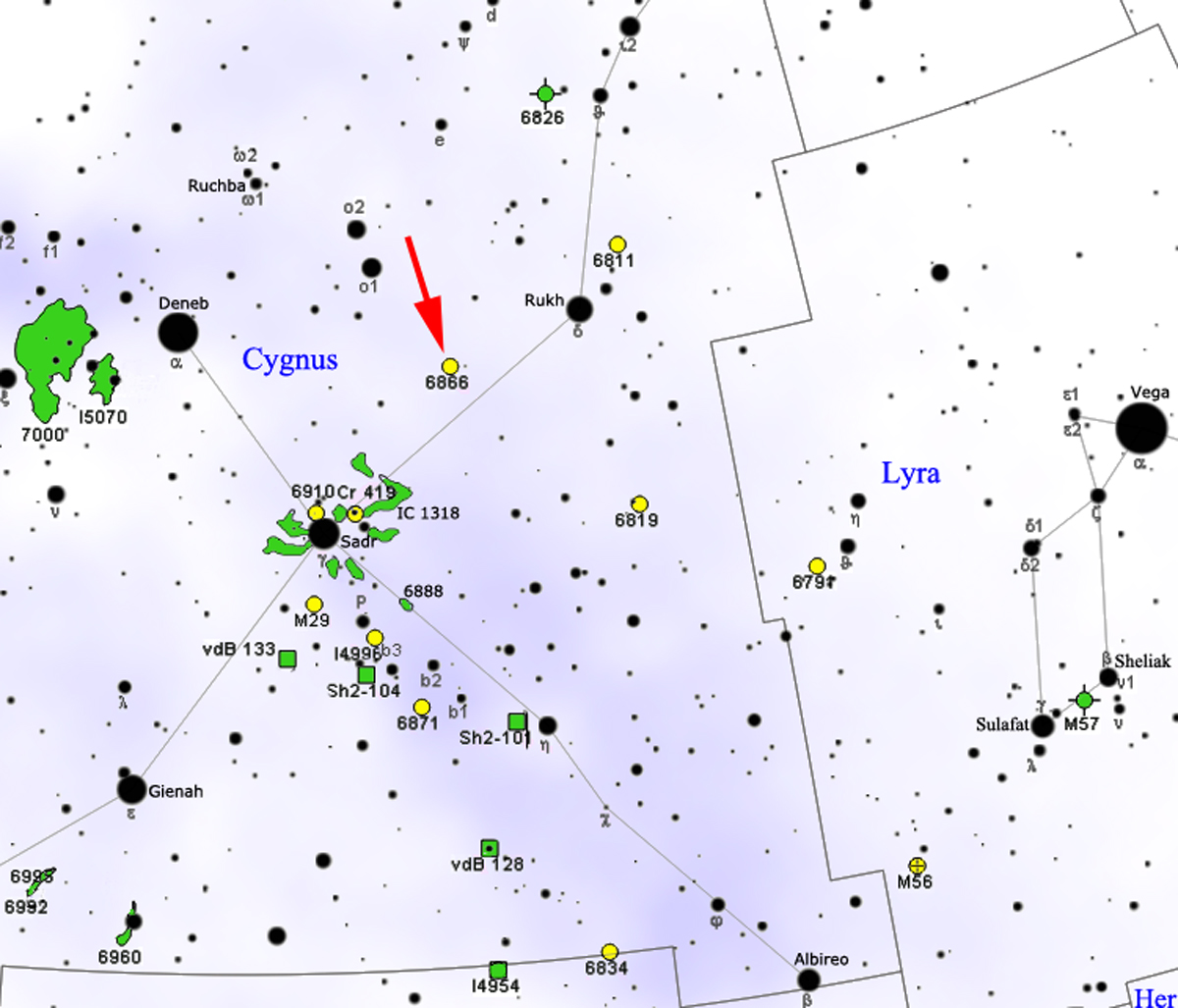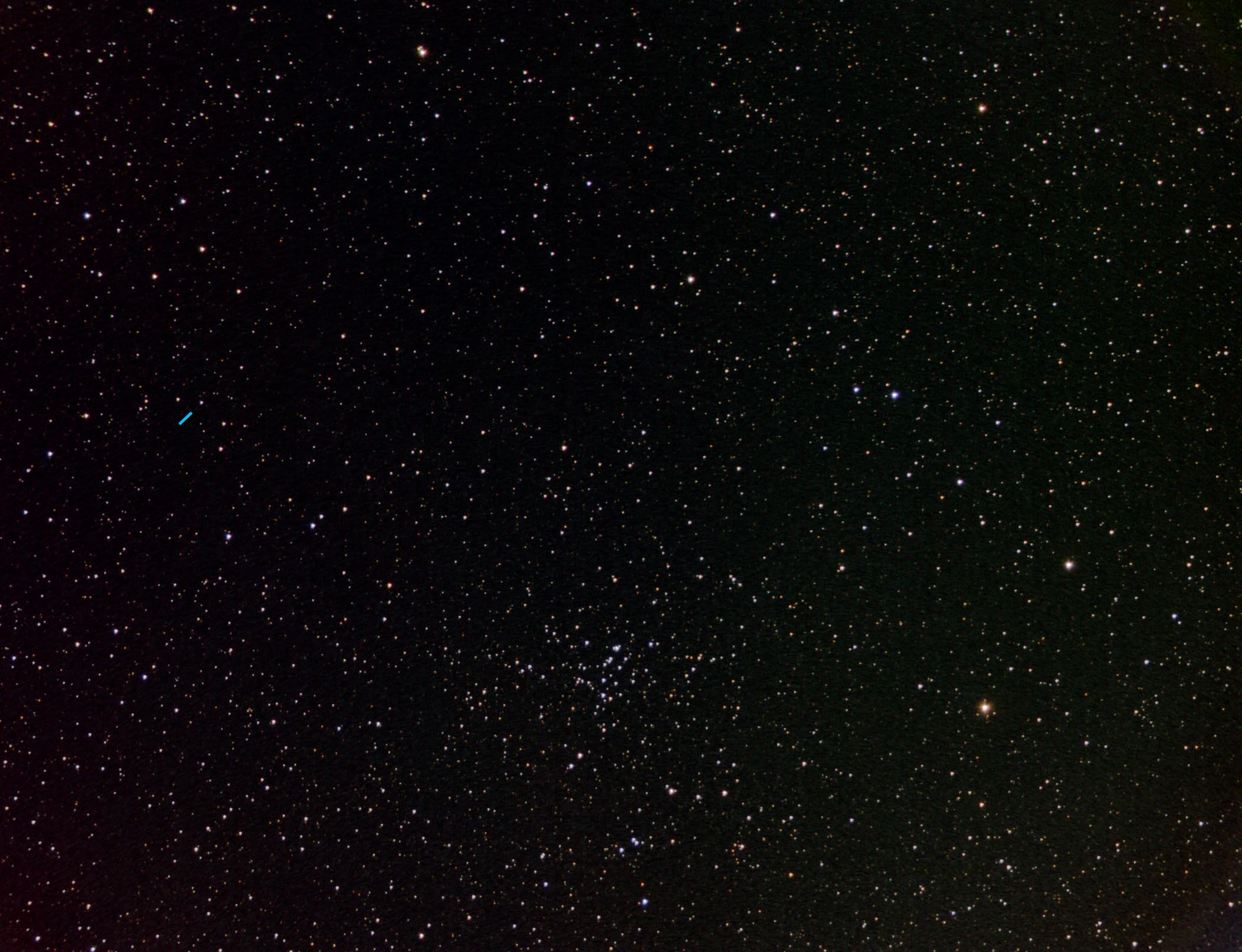
 | SOCO Blog |
08 January 2017
TABBY'S STAR
If you've been keeping up with science news the past year, you know that one of the hottest topics of dissussion is "Tabby's Star" or, more properly, KIC 8462852. If you love a mystery, this is the star for you. Rarely in recent years has a single star provoked more speculation, yet we are no closer to explaining the truth about this enigmatic object.
OK, in a nutshell, this star was the subject of observations by non-professional astronmers as part of the Planet Hunters Project. This group uses data from the Kepler Space Telescope to detect episodic decreases in a star's brightness related to planets orbiting the star passing in front of the star. This approach has led to the discovery of hundreds of exoplanets. Anyway, the group observed dips in the brightness of the star KIC 8462852, but these dips in brightness were much different that those normally associated with the presence of exoplanets. The dips were irregular and, more importantly, were much greater than what might be expected from the transit of a planet in front of the star. Some of the dips reduced the overall brightness of the star by approximately 20 percent. The reduction in brightness caused by a Jupiter-sized planet would be less than 1 percent. As a result, astronmers began searching for an explanation for this unusual behavior.
To date, numerous possible explanations have been proposed (and mostly disposed). The lead scientist in the group initially describing the observed results, Tabetha S. Boyajian (for whom the star has been unofficially named), initially hypothesized that the decreases in brightness were due to a swarm of disintigrating comets orbiting the star. However, subsequent observations in the infrared have not detected such material in the vicinity of this star. Other natural sources of variations in the brightness of the star include:
Natural variability. This can be ruled out because the star is a fairly standard F class star, which should not exhibit variability.
Groups of asteroids. Again, infrared observations have not detected the presence of asteroid belts.
Clouds of material orbiting the star. Such halos of material are found around young systems that are in the process of forming, but this star is too old for that.
Black holes. A black hole orbiting the star would cause it to visibly wobble, but this has not been detected. A black hole passing in front of the star would cause optical lensing of the star's image, which also has not been seen.
Small dark nebulas. Small concentrations of dust passing between us and the star could cause the observed reduction in brightness, but these dark objects would have to be exceptionally small (much smaller than what we normally find). Also, no darkening of nearby stars has been detected.
Which brings us to the non-natural explanations. The most popular is that the inhabitants of a planet circling KIC 8462852 have built, or are in the process of building, a huge structure around the star in order to harvest the star's energy. Such a structure, called a "Dyson Structure" (in honor of Freeman Dyson, who proposed such a structure in 1960), would be a tremendous technological achievement. Recent observations by SETI have not detected radio emmissions from this star system that would indicate the presence of an advanced civilization. While the probability of such a megastructure existing is small, nothing in the observed data rules it out.
I'm sure we'll eventually determine the cause of this phenomenon. In the meantime, Tabby's Star remains a very interesting object. As sown in the chart in Figure 1, Tabby's star is located in the constellation Cygnus very close to the open cluster NGC 6866. This time of the year, Cygnus is hanging low in the western sky, so I decided to try to get an image that might contain Tabby's Star before the constellation departed.

Figure 1. Finder chart showing the approximate location of Tabby's Star (KIC 8462852).
Source: Roberto Mura
The night of 6 January was clear and cold, providing the opportunity for imaging. The proximity of Cygnus to the horizon meant that I wouldn't have a lot of time to image before it set that night. Normally in imaging objects like open clusters, I acquire at least 16 images in each of the red, green and blue spectral bands. In this case, I chose to reduce the number of images to six in each of the three spectral bands. Reducing the number of images can increase the overall level of noise in the resulting processed images, but the trade-off was necessary to complete the imaging before the object got too low in the sky.
The results of my imaging effort are presented in Figure 2. The open cluster NGC 6866 shows up nicely. Tabby's Star has a normal visual magnitude of 11.7, so it should be visible in this image. After examining images of the star and its surroundings from several sources, I was able to located Tabby's Star in my image (indicated by the small blue mark in the image). An enlarged portion of the image surrounding the star is presented in Figure 3.

Figure 2. My image of NGC 6866 and its surroundings; small blue mark indicates Tabby's Star.

Figure 3. Enlarged portion of Figure 2 showing Tabby's Star and its surroundings.
OK, you can't see any Dyson Structures in my image. It's just a star, similar in appearance to many others in the image. But what is intriguing is the thought that, when you look at this tiny point of light, maybe you're seeing the site of another advanced civilization in the cosmos. If nothing else, you're seeing an object that has up to now baffled the best astronmers on our world. So, that makes this tiny point of light one of the most interesting (while not visually spectacular) objects that you can see in the sky.
 Return to SOCO Blog Page
Return to SOCO Blog Page
 Return to SOCO Main Page
Return to SOCO Main Page
Questions or comments? Email SOCO@cat-star.org